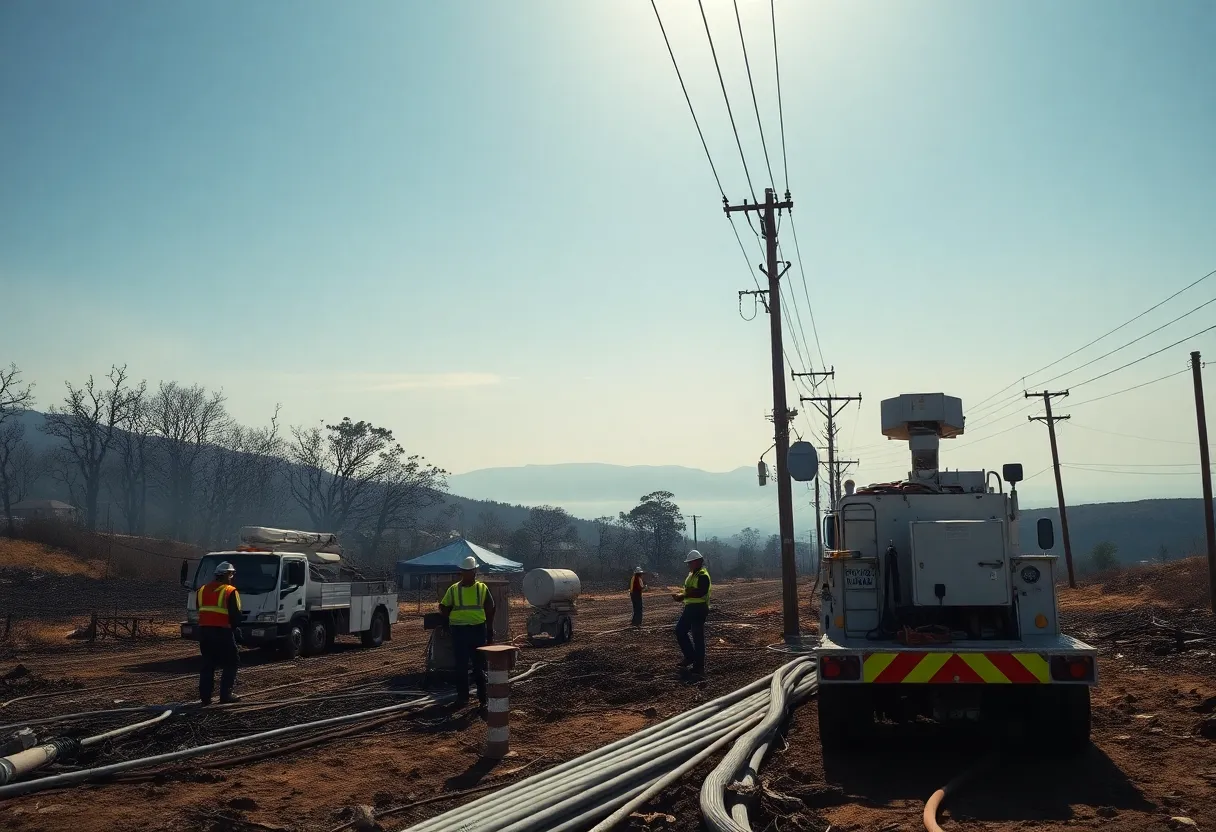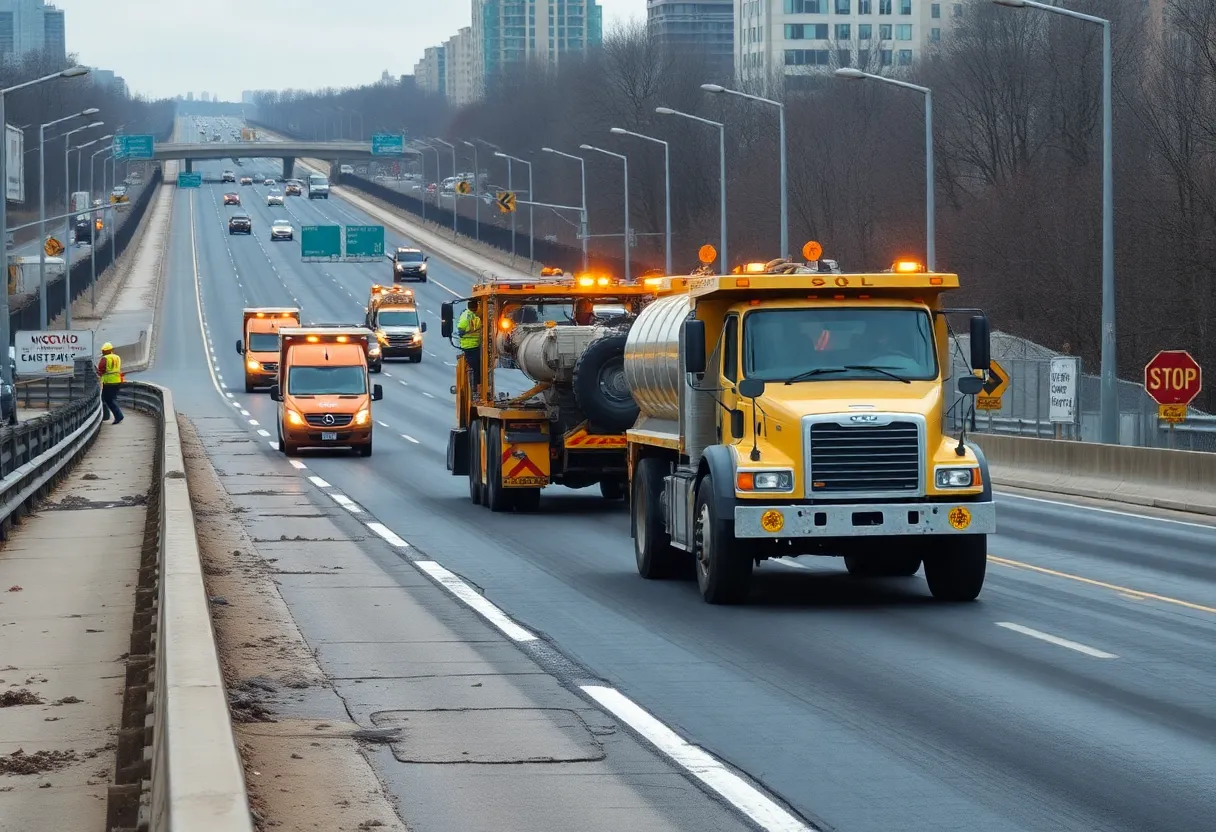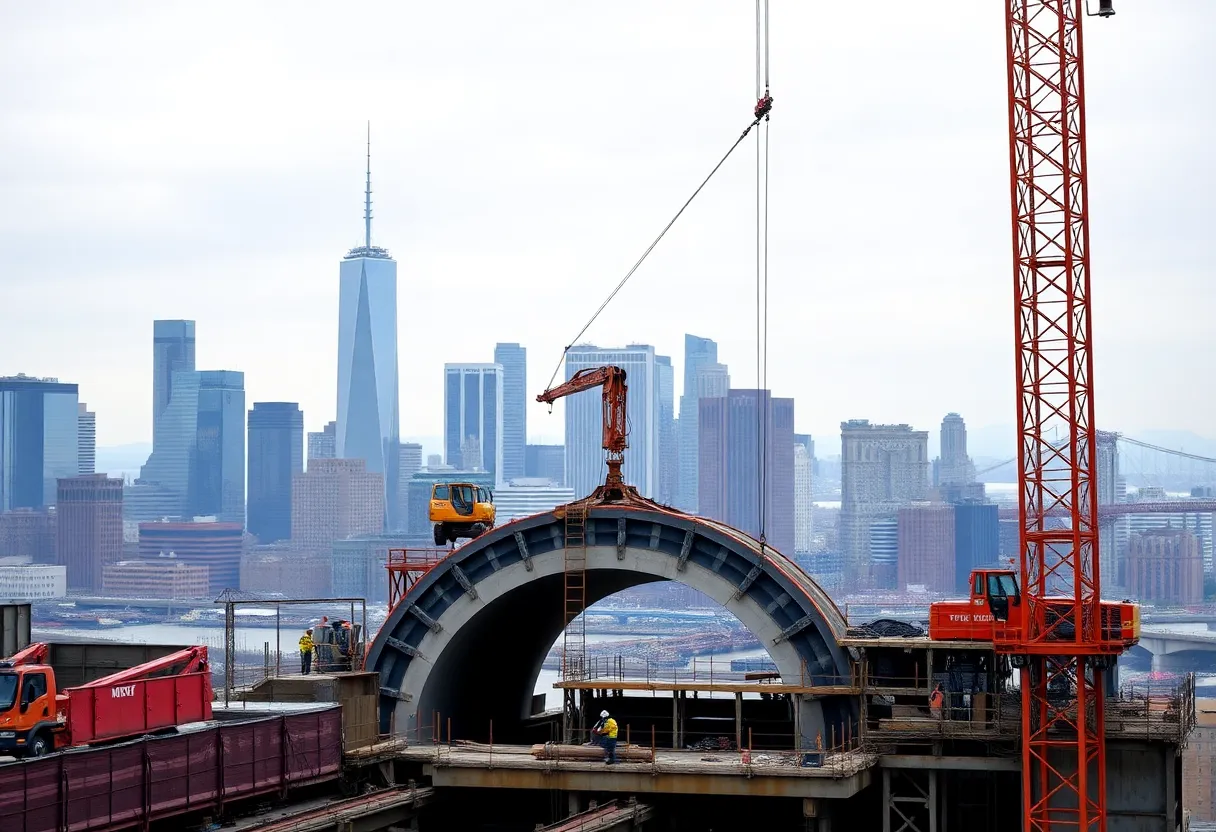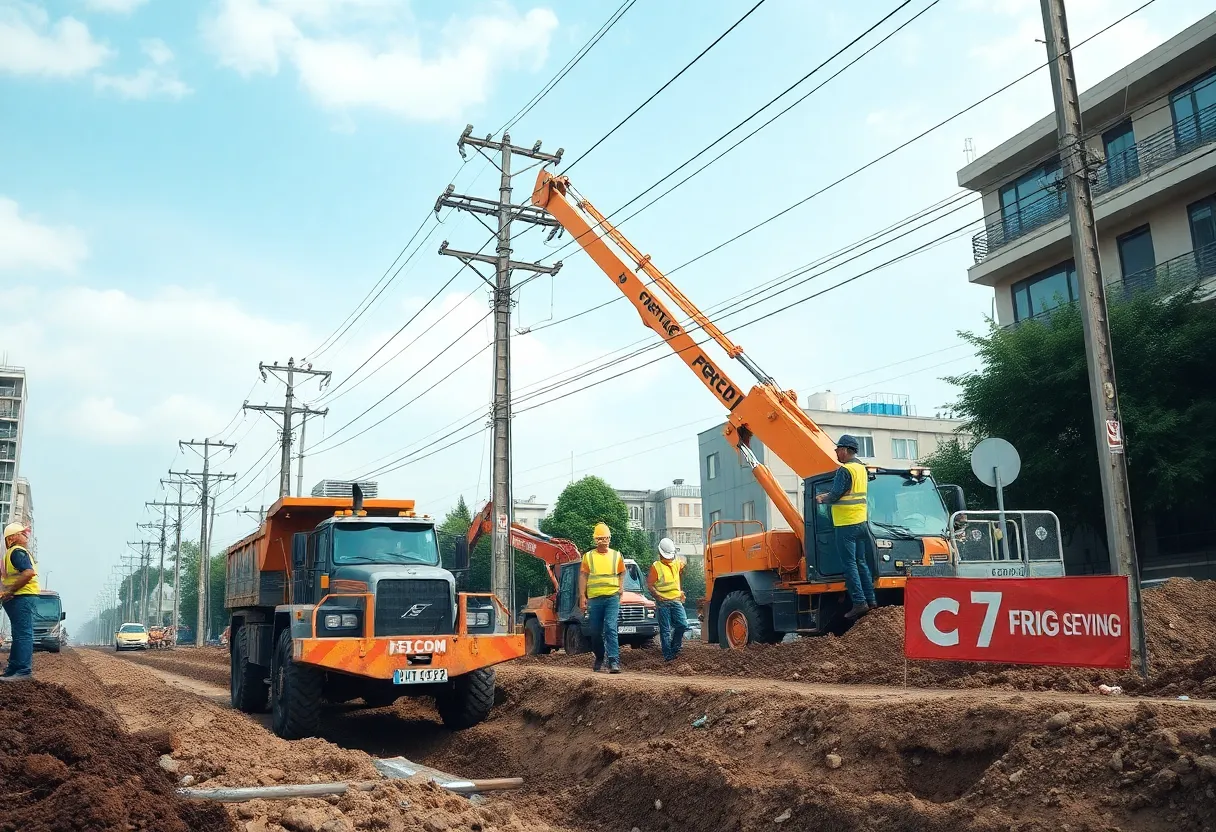California (Eaton and Palisades fire zones), August 16, 2025
News Summary
The governor issued an executive order temporarily suspending state-level CEQA and California Coastal Act reviews for utility work restoring electric, gas, water, sewer and telecommunications infrastructure in the Eaton and Palisades fire zones. The move aims to shorten permitting and environmental review timelines to accelerate utility restoration and encourage undergrounding where feasible. Officials say the order complements earlier waivers, but rebuilding still faces major challenges including skilled labor shortages, materials and transformer supply limits, high construction lending costs, insurance barriers, and local permitting delays. Environmental groups call for balanced safeguards as recovery proceeds.
Governor suspends key environmental rules for utility work to speed rebuilding after major Los Angeles fires
State officials have temporarily suspended parts of two major environmental laws so utility providers can move faster to restore and rebuild infrastructure in areas hit by the recent Eaton and Palisades fires. The action applies specifically to work on electric, gas, water, sewer and telecommunications infrastructure in the fire burn zones and is intended to accelerate cleanup, reconnect services and get displaced residents back into housing.
What the order does and why it matters
The executive action removes normal requirements under the California Environmental Quality Act (CEQA) and the California Coastal Act for utility projects in the affected zones. Officials say the change will shorten permitting steps and environmental review timelines for utilities seeking to repair or relocate lines and pipes. The governor has also urged utilities to install lines underground where feasible to reduce future fire risk, though underground work is more expensive than overhead installations.
Immediate priorities: cleanup and housing
Authorities are focused first on debris removal and housing tens of thousands of people displaced by the fires. A federal debris cleanup program has a right-of-entry enrollment deadline of April 15 for homeowners and some multifamily buildings to participate. The fires burned nearly 48,000 acres and damaged or destroyed more than 16,000 structures, including over 9,500 single-family homes, roughly 1,200 duplexes and about 600 apartments.
Rebuilding will be slow and costly despite relaxed rules
Experts warn that regulatory relief alone will not be enough to quickly rebuild neighborhoods. The region faces a shortage of skilled construction workers and high demand for materials and specialty equipment such as electrical transformers. Lending conditions for builders remain tight, with industry groups reporting construction lending rates in the range of about 10% to 12% at the time of reporting, even after modest movements in broader interest rates. Those financing costs make building expensive in a market that already ranks among the country’s most costly to construct in.
Lumber prices have eased in recent years, but analysts caution that possible new tariffs and a rapid surge in demand during rebuilding could push prices back up substantially within a year. In addition, the state’s housing market dynamics and high land values mean developers may find redevelopment profitable, and many homeowners could accept buyout offers rather than pursue rebuilds, especially when offers exceed insurance payouts.
Insurance, codes and worker training
Insurance problems are also slowing recovery. Some insurers have exited high-fire-risk areas, leaving homeowners with limited, high-cost options. Statewide reinsurance and an industry backstop required additional contributions from carriers after multibillion-dollar losses, which is likely to increase premiums. Without insurance, many homeowners cannot secure mortgages needed to rebuild. Updated building standards adopted after previous fire seasons add time and cost because rebuilt homes must meet newer, more fire-resistant codes.
Workforce shortages are long-standing: there are roughly 400,000 open trades jobs nationally at any given time, and a significant share of current construction workers are expected to retire in the coming decade. To help fill the gap, private foundation support has been pledged for trades training programs aimed at preparing new plumbers, carpenters, electricians and HVAC specialists for the regional rebuilding effort.
Environmental and legal concerns
Environmental advocates warn against broad, blanket waivers of environmental review, arguing that short-term speed should not sacrifice long-term resilience or ecosystem health. CEQA, in place since 1970 to require government agencies to analyze and mitigate environmental impacts, already includes exemptions for many rebuild scenarios and for small projects. Still, some infrastructure upgrades—like undergrounding lines, installing new pipelines or creating water storage for firefighting—can trigger reviews and delays under current rules.
Officials note that some undergrounding and relocation work was already planned and permitted before the fires, and the recent executive action is intended to ease permitting for future projects. At the same time, state leaders have said the suspensions are targeted to speed recovery and do not signal a permanent change in support for environmental protections.
Outlook
The recovery will shift from immediate cleanup toward years of rebuilding. Past post-fire rebuilding in the state has shown that new construction can rebound reasonably fast, but many homeowners may opt not to rebuild or face obstacles from permits, insurance and financing. Balancing the need for speed with resilience to future climate-driven wildfire risk will be a central challenge for communities, utilities and policymakers in the months and years ahead.
Frequently asked questions
What laws were suspended and for what purpose?
Portions of state environmental laws governing environmental review and coastal development were temporarily suspended for utility projects in the fire-affected zones. The intent is to reduce permitting time so utilities can repair and reinstall critical services faster and consider undergrounding where feasible.
Which utility systems are covered?
The suspension covers work on electric, gas, water, sewer and telecommunications infrastructure within the defined burn areas.
Does the suspension apply to rebuilding homes and businesses?
Prior executive actions and state law already provide exemptions for many rebuilding activities. The recent order focuses on utility infrastructure; other orders have addressed rebuilding of structures and some local permitting rules in fire-affected communities.
Will removing these reviews speed up rebuilding?
Removing environmental review requirements can shorten some approval timelines, but experts say labor shortages, material supply limits, high construction lending rates, and insurance barriers mean rebuilding will still face major delays and high costs.
How are residents getting help with cleanup?
A federal debris removal program is accepting enrollments for property owners affected by the fires; there is a specific deadline to submit right-of-entry forms to participate. Some multifamily properties may be eligible for assistance.
What is being done about the construction workforce shortage?
Private and nonprofit investments have been announced to expand trades training and support people entering construction careers. These programs aim to help fill gaps in skilled trades needed for rebuilding.
Key features at a glance
| Feature | Details |
|---|---|
| Executive action | Temporary suspension of CEQA and Coastal Act rules for utility work in Eaton and Palisades burn zones to speed restoration. |
| Primary goal | Faster utility reconnection, debris cleanup, and return of displaced residents; encourage undergrounding where practicable. |
| Immediate deadline | Right-of-entry forms for federal debris cleanup must be submitted by April 15 for homeowners to enroll. |
| Damage and scale | About 48,000 acres burned and more than 16,000 structures damaged or destroyed, including thousands of homes. |
| Major rebuilding hurdles | Skilled labor shortages, material and transformer supply limits, high construction lending rates (~10–12%), insurance market strain. |
| Workforce response | Private foundation investments and training programs are funding trades education to expand the pool of builders and technicians. |
| Environmental concerns | Advocates seek balance between speed and long-term resiliency; some warn against blanket waivers without safeguards. |
Deeper Dive: News & Info About This Topic
Additional Resources
- NBC Los Angeles: How Paradise is Being Rebuilt — What SoCal Can Learn Post-Fires
- Wikipedia: Wildfire
- Holland & Knight: Orders Addressing Rebuilding After Southern California Fires
- Google Search: Southern California rebuilding after fires
- CBS News: Southern California faces frustrating, expensive rebuilding process
- Google Scholar: rebuilding after wildfires California
- Los Angeles Times: California suspends environmental laws to speed rebuilding, undergrounding utilities
- Encyclopedia Britannica: California Environmental Quality Act
- Wired: Why it’s taking LA so long to rebuild after the wildfires
- Google News: LA rebuild after wildfires
Author: Construction NY News
The NEW YORK STAFF WRITER represents the experienced team at constructionnynews.com, your go-to source for actionable local news and information in New York and beyond. Specializing in "news you can use," we cover essential topics like product reviews for personal and business needs, local business directories, politics, real estate trends, neighborhood insights, and state news affecting the area—with deep expertise drawn from years of dedicated reporting and strong community input, including local press releases and business updates. We deliver top reporting on high-value events such as the New York Build Expo, infrastructure breakthroughs, and cutting-edge construction technology showcases. Our coverage extends to key organizations like the Associated General Contractors of New York State and the Building Trades Employers' Association, plus leading businesses in construction and real estate that power the local economy such as Turner Construction Company and CMiC Global. As part of the broader network, including constructioncanews.com, constructiontxnews.com, and constructionflnews.com, we provide comprehensive, credible insights into the dynamic construction landscape across multiple states.





